You’re in luck if you like the scent of a lilac tree. Contrary to popular belief, there are many different species of lilac trees, but they all have one thing in common: they will entice you in and make you fall in love with them every time!
Lilacs are the best way to greet spring after a long, dismal winter. They attract a lot of pollinators and have a rich scent that is appreciated all over the globe. The Syringa genus of garden lilacs contains numerous species, each with several cultivars, and is part of the Oleaceae family (including olive, jasmine, white fringe, and ash).
Almost all of these blooming woody plants are very hardy, simple to cultivate, and long-lived, needing little care other than trimming to keep them manageable. After the blooms have gone, prune as soon as possible. When planted in full light, lilacs flourish and produce the greatest blossoms.
Lilacs are often seen in parks, gardens, and other public locations because they are both attractive and fragrant. Every other year, they blossom lavishly, and there are many different varieties to pick from if this is the tree for you.
Syringa Pubescens
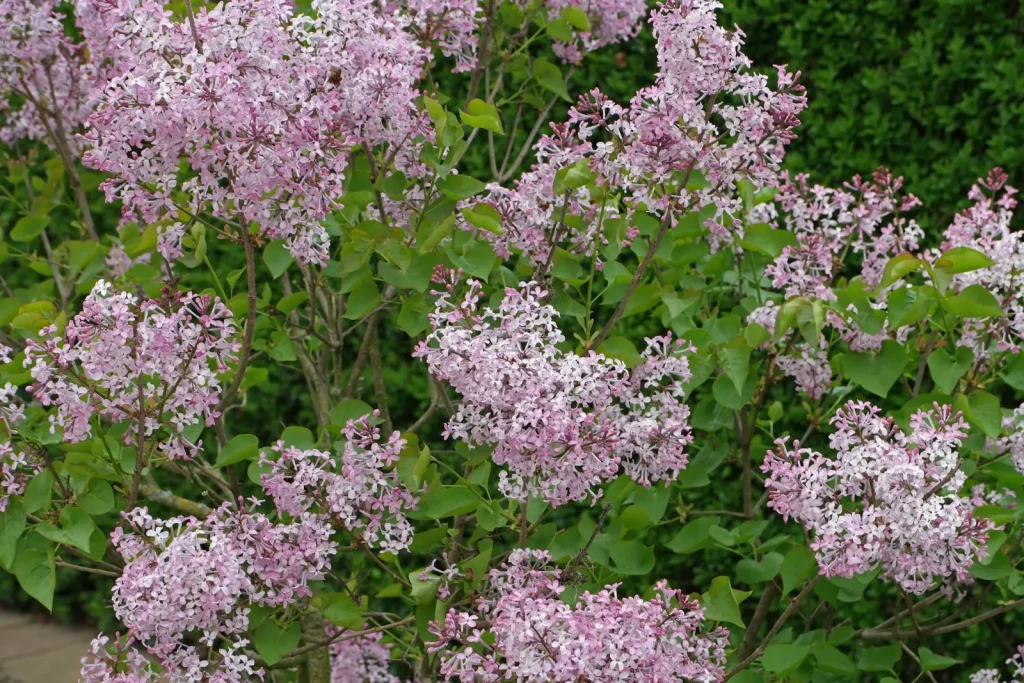
Also known as littleleaf lilac. Lilacs of the S. pubescens type are frequently referred to as Manchurian lilacs, and the cultivar known as ‘Miss Kim’ is a member of this type. Every year in May, the fragrant flower panicles of ‘Miss Kim’, which range in color from lavender to icy blue, herald that spring has come.
This type has a large following from Minnesota all the way down to Georgia because of its resistance to both cold and heat. Since ‘Miss Kim’ is a shorter variety of lilac than most others, it is an excellent option for foundation plantings.
Also, beautiful lilac bushes are produced from our honorable mention types which are the beauty of Moscow and Miss Canada with its beautiful ivory silk. There are also different types that will be mentioned in the following text.
Syringa Vulgaris ‘Andeken

This gorgeous shrub is a cultivar of the common lilac, Syringa vulgaris. Its translated name is ‘Souvenir of Louis Spaeth,’ and it is occasionally marketed under that name. The blooms on this shrub are a stunning shade of purple-red and they bloom in May. It tends to grow much more compactly than the typical lilac, which may reach heights of up to 16 feet.
When in bloom, this type has a strong ability to entice butterflies and hummingbirds, but it does not have much of an allure for deer and rabbits. It thrives best in climates with moderate summers, since this reduces the likelihood of powdery mildew turning the leaves into an eyesore. This particular cultivar of lilac despises conditions of high heat and humidity even higher than other varieties.
Tinkerbelle Lilac
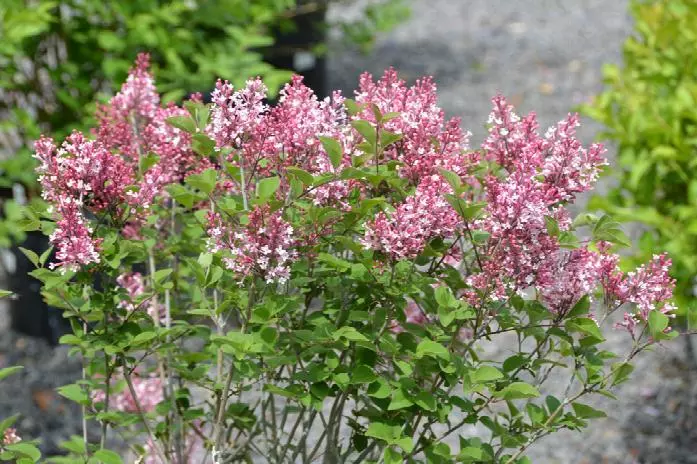
Because it only grows to be around eight feet tall and five feet wide, this kind of lilac tree is ideal for use in gardens that are not very large. The butterflies like it, mostly due to the fact that it has a somewhat peppery smell, and it thrives well in growth zones ranging from 3 to 7.
Tinkerbelle lilacs are a popular choice since they produce blossoms in the color of deep burgundy and bloom in the late spring. This makes them a desirable addition to any garden, regardless of where they are placed. It may also be found on shrubs and trees, and it provides a splash of color to any garden in which it is present.
President Grevy Lilac
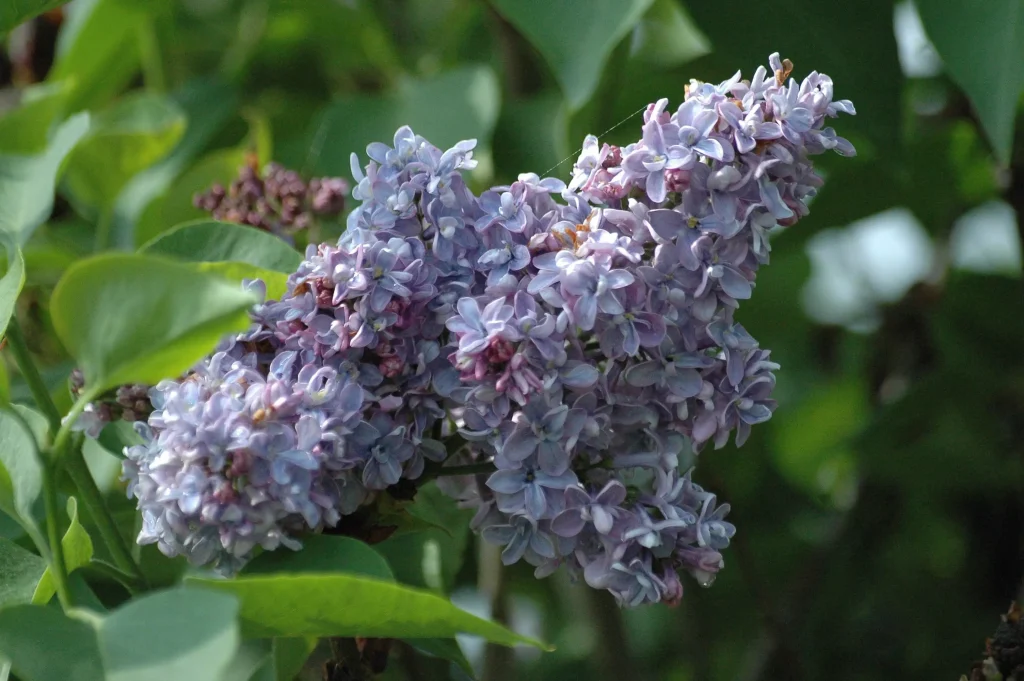
This lilac is a favorite among those who like lilac trees since it begins to bloom in the middle of May and has blooms that range in color from light blue to lavender. The tree may reach a height of 12 feet and a width of 12 feet, and the blooms can be very substantial, reaching a length of 10 inches at their longest point.
Not only is the blossom of President Grevy exceedingly gorgeous, but its delicious aroma is likely to be noted by every single person who walks by. It is a French-type lilac that grows best in zones 3 to 7, and it looks great when it is used as a background for other plants. White flowers similar to Grevy Lilac are also present in the Yankee doodle as one of the best lilacs with a Puget blue and sensibility pink color of double flowers which are there in late summer.
President Lincoln Lilac
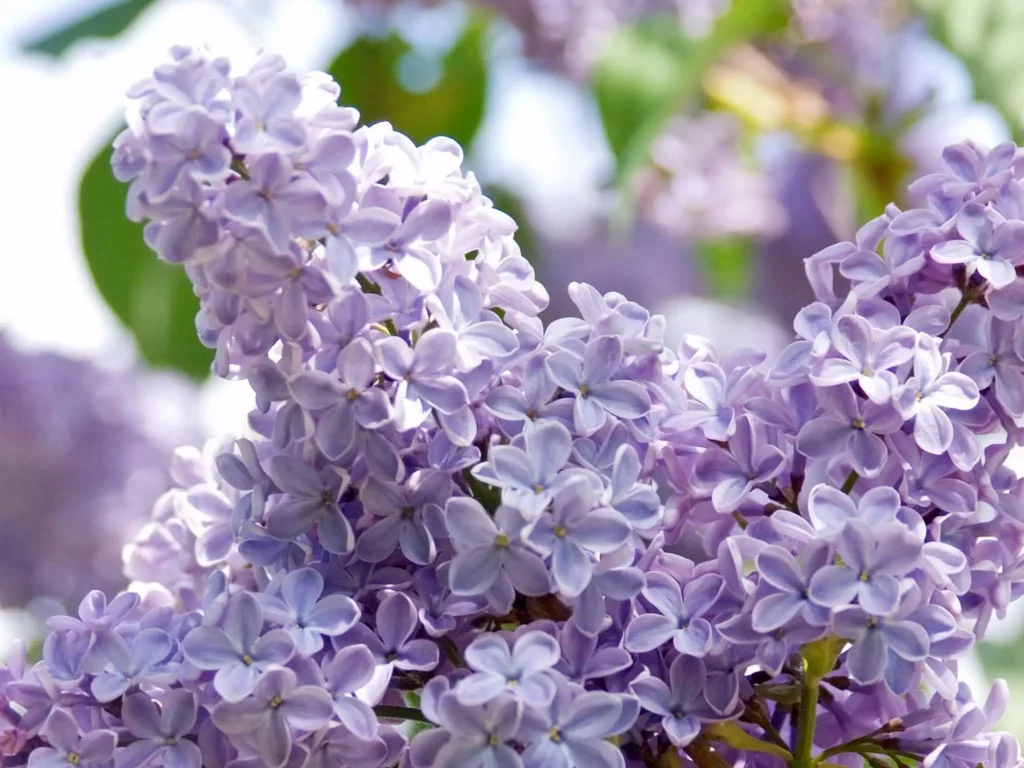
The President Lincoln lilac may reach a height of 10 feet and a width of 10 feet, and it has stunningly beautiful blue blooms that bloom in clusters. You don’t need to go any farther in your search for anything to utilize as a screen or hedge in your garden since this is it.
This lilac tree has a very strong fragrance and thrives in USDA plant hardiness zones 3 through 7. They start to bloom in the middle of spring and have a dense appearance due to the clustered flowers that they produce. An honorable mention here includes the fragrant lilac bush Palibin.
Charles Joly Lilac

The Charles Joly is a French variation that is a hybrid that produces blooms that are a deep purple color on the outside and a magenta color on the interior. Their flowers are quite an eye-catching cultivar because of these colors.
It has been around since the late 1800s and is one of the most popular French lilacs that are planted today because of its large size (it can grow up to 12 feet high and 10 feet wide). Your yard will benefit greatly from the addition of a Charles Joly lilac tree, which thrives in growth zones ranging from 3 to 7 and creates an excellent screen.
Chinese Lilac
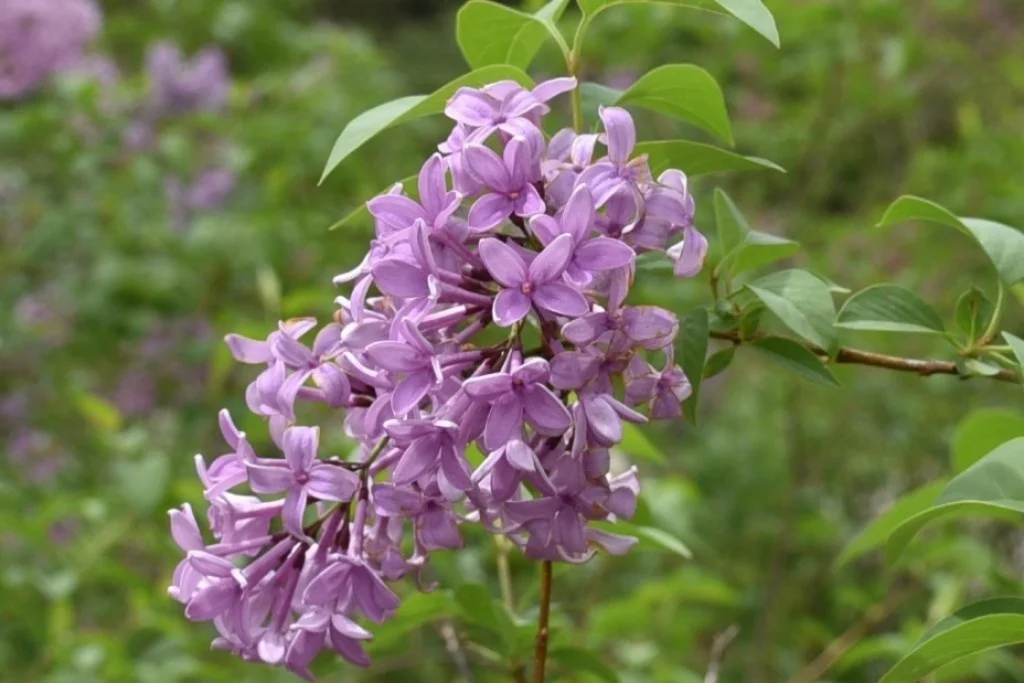
A beautiful and eye-catching lilac shrub, the Chinese lilac, also known as Syringa x Chinensis, is a great addition to any flower garden or landscape. Flowers of a lilac-pink or purple hue appear on this shrub in the spring, often around the beginning of the month of May. The shrub itself is of medium size.
The fragrant flowers of the Chinese lilac shrub, like those of many other types of lilac plants, are a popular attraction. It is a cross between the species Salvia persica and Salvia vulgaris. Honorable mentions of hybrids here include the common white lilac and the Maiden’s Blush, which are great for the average lilac cultivar and his garden.
Declaration Lilac
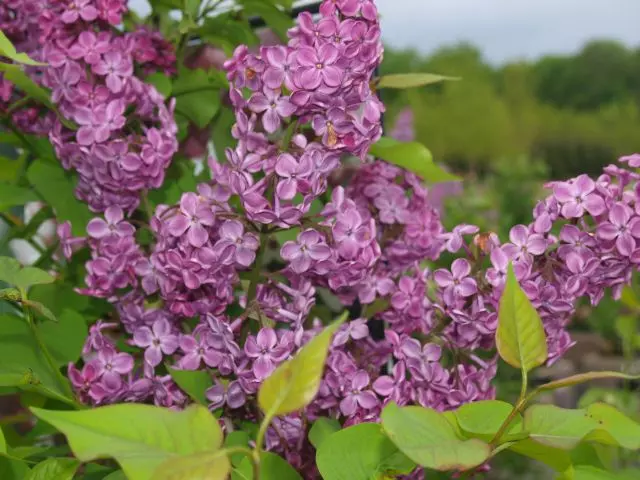
This kind of lilac tree has very stunning blooms that are a reddish-purple color and bloom a little bit earlier than other varieties of lilac trees. Due to the intensity of their aroma, these flowers are ideal for placing in vases and for adorning coffee tables since they can be used in both settings.
The Declaration Lilac may attain heights of up to 7 feet and widths of up to 7 feet, and they thrive in climate zones ranging from 4 to 7. In addition to this, they make an excellent focal point shrub and, if desired, may even be trimmed into a hedge. They may reach a length of up to 15 inches and grow in clusters, which makes this particular kind of lilac particularly striking.
Chantilly Lace Lilac
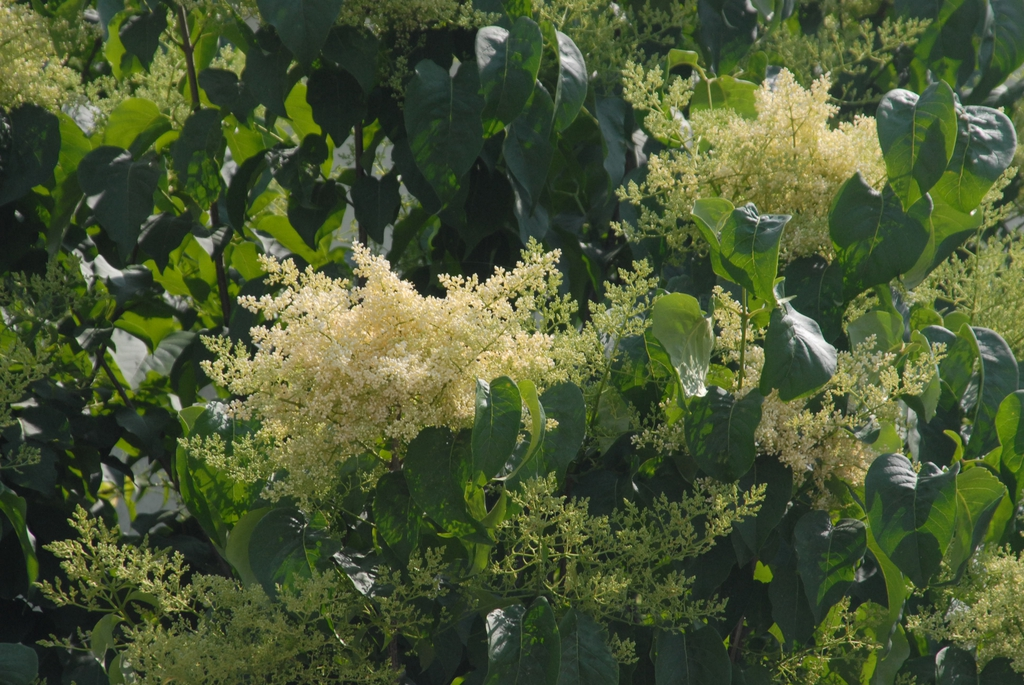
This particular kind of lilac tree has blooms that are an ivory color around the middle of summer and has foliage that is capable of undergoing color change during the course of the season. It is a huge tree that can reach a height of up to 25 feet and a width of up to 25 feet if it is kept away from hot weather.
The tree will look wonderful for a very long time if you keep it out of hot weather. Lilac lovers also prefer the dwarf Korean lilac which is a reblooming lilac in early fall which is excellent for smaller gardens. It is a common species that has a sweet scent combined with a beautiful shrub and the perfect shade.
Syringa Emodi
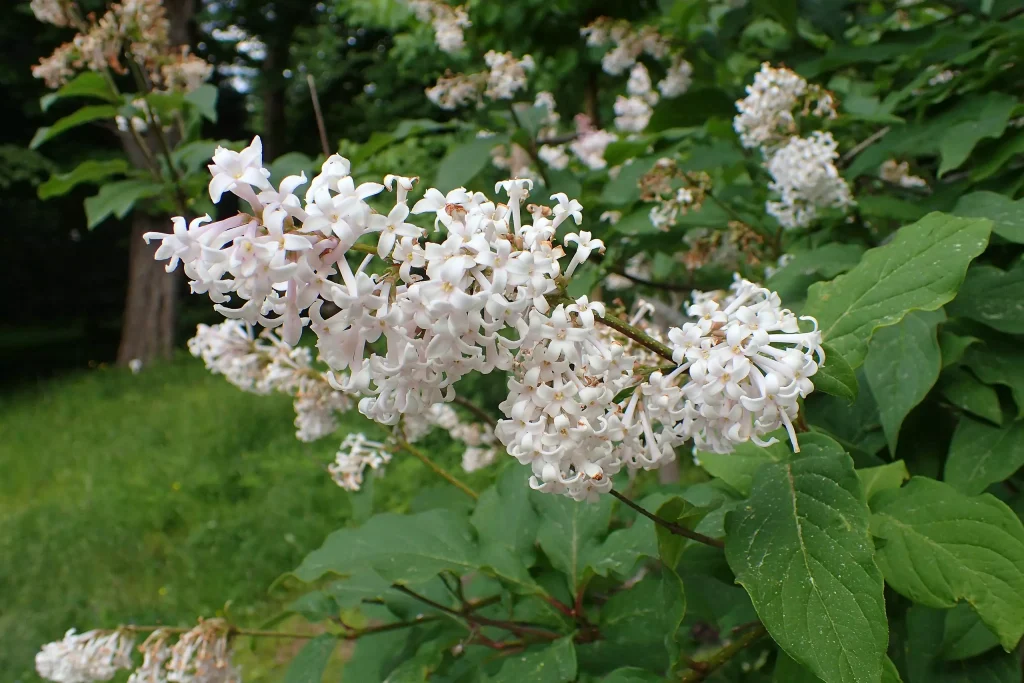
It is a gorgeous deciduous shrub that is often referred to as Himalayan lilac. In the early summer, it has blooms that range in color from light purple to white. It is well known that the blossoms of this particular lilac plant exude an odor that is disagreeable.
The typical color of the leaves is a dark green, and their form ranges from oblong to elliptic. Syringa emodi ‘Elegantissima’ is a strong deciduous shrub with yellow and green variegated leaves and a stout stem, and it is one of the most common varieties or cultivars of the syringa emodi plant.
Honorable mention of fragrant trees here includes the golden eclipse lilac which has flower spikes and shrub blooms of a golden color. Its origin growing zone is in Northern China. To grow it in your garden you do not need so much effort just enough water.
Read more articles in the Lifestyle Category
